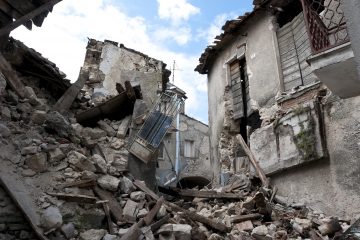Here’s an example of how I present my vocab. Here are the first three weeks of vocab for Spanish 1 this semester. I never give more than 15 phrases per week, and I don’t like giving even that much, but in Spanish 1 especially it’s hard to avoid that–they just flat out need the vocabulary. In Spanish 2 their words are often words that are repeated from earlier in the year or from Spanish 1, just in a different tense or as part of a different phrase.
This is the only time I present the words with their English counterparts. My students write them in spiral-bound notecards (that, a composition notebook, and a set of colored pencils comprise their supplies for my class since I don’t issue a textbook). They review them for five minutes every day, looking at the English and saying the Spanish in a low but audible voice. I wish I could find a less translation-heavy way of doing that, but it’s something the students have asked for (even though they complain about the reviews) and it has seemed to be a good compromise between me not wanting to give them anything in English and them wanting everything in English. During a review, they count how many sets of 10 words they can get through in 5 minutes. After 6 reviews, I collect the review counts to make sure they’re getting through a reasonable number of words and are holding steady or improving. And sometimes I have them start in different places just to make sure everyone’s seeing all the words at some point.
Anyway, here are the words for Spanish 1:
Week of January 12, 2009:
el año nuevo the new year
ni un poco not even a little
¿de veras? really?
él tiene que poner la mesa he has to set the table
pongo las servilletas allí I put the napkins there (pres.)
el comedor dining room
limpian la cocina they clean the kitchen
lavo los platos I wash the dishes
debes pensarlo you should think about it
pienso viajar pronto I’m thinking about traveling soon
¿Qué piensas? What do you think?
pensamos en We’re thinking about
no cierra la puerta he/she doesn’t close the door
empiezo en seguida I start right away
empezamos tarde we’re starting late
Week of January 20, 2009:
este lugar this place
¿piensas que es bonita? do you think it’s pretty?
el lavaplatos dishwasher
prefiero esa estufa I prefer that stove
esta lámpara this lamp
pásame ese pan pass me that bread
un poco de pimienta a little pepper
preferimos mucha sal we prefer a lot of salt
¿te gusta aquel postre? do you like that dessert (over there?)
lo pone aquí he puts it there
prefieren mantequilla they prefer butter
aquella taza that cup (over there)
necesito una cuchara I need a spoon
este tenedor this fork
pedimos esos vasos we order(ed) those glasses
Week of January 26, 2009:
pregunta si vamos (s)he’s asking if we’re going
preferimos azucar we prefer sugar
tienes que ayudarme you have to help me
escribe una carta (s)he writes a letter
repites you repeat
te digo que… I tell you…
me gustaría saber I’d like to know
dicen que van a ir they say they’re going to go
decimos que sí we say yes
mi cuarto/habitación my (bed)room
pide sopa (s)he orders soup
tengo hambre I’m hungry
tiene sed (s)he’s thirsty
tenemos frío we’re cold
3 Comments
Comments are closed.




[…] do you develop a vocabulary list, if you want to use one (and I do, sometimes very long […]
[…] 14 Energizing Review Games. Why do I use review games in my classroom? Instead of using games to review before a quiz or an exam, I view games as an opportunity to provide additional input in the target language in a fun, energy-filled atmosphere for the students. The below compiled list of games are ones that I use when reading novels with my students. They are games that I use after reading the text and after discussing the chapter, several chapters, or an entire novel. An example of vocab | Musicuentos. […]
[…] you want to look at some really old Sra. Musicuentos material, you can check out an example of the vocab list from my 2009 Spanish 1 class, and let me tell you my AP Spanish vocab lists were epically long […]